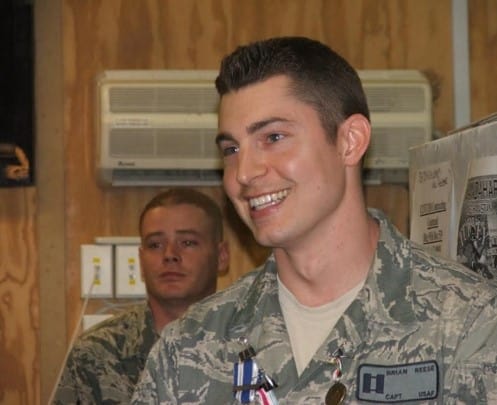Top 5 Tips for Veterans Applying for VA Disability Benefits Years After Service
If you’re a Veteran applying for VA disability benefits years after service, pay close attention, because these tips might be the difference between winning and losing the VA disability benefits you deserve by law!
Brian Reese here from VA Claims Insider, and today, I’ll be covering my top 5 tips if you’re attempting to apply for VA benefits and you’ve already left the military.
But first, I want to examine the results of a recent study we conducted of 1,065 Veterans, which revealed some shocking statistics about VA disability benefits…
More than 70% of Veterans (752/1,065) cited that they either didn’t know about VA disability benefits until after they left active duty military service, or they lacked basic knowledge of the VA claim process. ?
For example, here were 4 of the top 5 most cited reasons why Veterans may be applying for VA disability benefits years after service (first-time filers):
- #1. “I didn’t know I could file for a VA disability increase or add secondary claims, so I didn’t even try (wasn’t educated about the process).” 287/1,065 votes or 26.9%.
- #2. “I wish I knew back then that I should have went to the clinic and documented my injuries. A lot easier to prove your case.” 205/1,065 votes or 19.2%.
- #3. “I tried before and got denied so I quit (until I found you).” 161/1,065 votes or 15.1%.
- #4. “I didn’t know VA disability compensation existed until after I left the military.” 99/1,065 votes or 9.3%.
If any of these resonated with you fellow Veterans, you’re not alone!
Stay tuned though, because it’s time to reveal and explain my Top 5 Tips so you can win, service connect, and get rated at the appropriate level under the law, even if you’re applying for VA disability benefits years after service.
Applying for VA Disability Benefits Years After Service – Top 5 Tips Explained
- Tip #1: Get Your Butt to the Doctor!
- Tip #2: Obtain Copies of Your Service Treatment Records
- Tip #3: Write Strong Personal Statements Using 38 CFR Part 4 As Your “North Star”
- Tip #4: Get a Buddy Letter to Help Prove That Your Disability Originated in the Military
- Tip #5: Ask Your Doctor to Write a Medical Nexus Letter to Help Prove the “Nexus” for Service Connection
How to Apply for VA Benefits After Service Tip #1: Get Your Butt to the Doctor!

Regardless of what any else tells you, I’ll always give you ground truth.
The MOST important part of the entire VA disability claim process is MEDICAL EVIDENCE!
Think of it this way: If it’s not in a medical record, it didn’t happen.
You must have a medical diagnosis of a disability condition in ANY one of the following:
- #1: Active duty service treatment records (military medical records)
- #2: VA medical records
- #3: Private medical records
A common myth is that you need to have a medical diagnosis in your service treatment records from when you served in the military – FALSE!
Many Veterans didn’t go the doctor while on active duty, thus, your current disability condition isn’t listed in your service treatment records.
Not to worry!
You simply need to have a medical diagnosis now and it needs to be in either VA medical records or private medical records.
If you think you have a medical condition, get your butt to the doctor and either get a first-time medical diagnosis or tell the doctor how severe your disability condition has become, which will help document the severity of symptoms in your medical records.
Tip #2: Obtain Copies of Your Service Treatment Records
It’s laughable to read things like “Veterans don’t need copies of their Service Treatment Records (STRs) when applying for VA benefits because the VA will obtain them on your behalf.”
Yeah, okay. ?
While the VA has a legal “Duty to Assist” to help claimants develop their VA disability compensation claim, they routinely FAIL in these efforts.
Please take my advice and do NOT file a VA disability claim until you have copies of your service treatment records!
Why?
Because I want you to maintain control of your own VA disability claim, meaning you’re going to want to file a Fully Developed Claim (FDC) online, which will allow for a faster and more accurate VA rating decision.
If you don’t currently have copies of your military service records, to include your medical and health records, you can obtain copies through the National Archives in St. Louis.
How Can I Obtain My Military Medical Records?

Veterans can obtain copies of their military medical records by mailing / faxing a written request (with wet signature) to the National Personnel Records Center, Military Personnel Records.
Click HERE to begin the process online with eVetRecs, after which you’ll have to print, sign, and mail a copy to the National Archives at the address below:
National Personnel Records Center
Military Personnel Records
1 Archives Drive
Saint Louis, MO 63138-1002
You can also fax your request for military records to: (314) 801-9049
If you’d rather download a copy of the Standard Form (SF) 180 – Request Pertaining to Military Records, you’ll need to fill, print, sign, and mail or fax to one of 14 possible locations depending upon your branch of the military and dates of service.
A DD 214 request only can take 10-21 days while a full military records request can take 90-180 days (or more), depending upon the nature of the request.
Once you get copies of your Service Treatment Records (STRs) go through them in detail!
You must know what’s in your medical records.
Applying for VA Disability Benefits Years After Service Tip #3: Write Strong Personal Statements Using 38 CFR Part 4 As Your “North Star”
If you’re going to file a successful VA disability claim, you must get “inside” the process, and understand HOW the VA will review and rate your claim.
To start, I think you need to gain a deep understanding of the law that governs the various disabilities.
To do that, you must begin with the source document!
CFR 38, Part 4, Schedule for Rating Disabilities is the one-and-only source document to glean information about the Schedule for Rating Disabilities.
It is also THE guiding document used by the VA Rater reviewing your claim.
I highly recommend reading through the entire publication.
It’s long, I know.
But understanding the various claimable disabilities and all corresponding ratings, is critical to getting a favorable outcome.
And, you must understand if your disability condition is even claimable and ratable.
Did you know there are more than 833 ratable disabilities under the law?
>> Click HERE to review the complete VA disability claims list. <<
*EXPERT TIP!* As you’re going through CFR, Title 38 Part 4, Schedule for Rating Disabilities, open an MS Word file on your computer, and begin copying/pasting various disability conditions that may pertain to you.
You might be surprised at how many disabilities you actually qualify for.
I also recommend writing a Statement in Support of a Claim on the VA Form 21-4138 for EVERY disability you’re filing for.
For example, you’re going to open and file one VA claim with many different disability conditions.
If you’re applying for VA disability benefits years after service, it’s especially important to write simple, clear, and concise statements for each condition, where you explain WHAT the condition is in detail, WHY it was caused or made worse by your active duty military service, and HOW it’s now limiting or affecting your life in a negative way.
Guess what else?
VA Raters are people just like you and me, and many times, they are fellow disabled veterans!
Go ahead and tell them why you’re applying for benefits for the first time even though you left the military long ago.
You can say things like, “I’m submitting a VA claim for the first time because I didn’t know about the VA until after I left the military. In this personal statement, I’ll explain how this condition is due to my active duty military service.”
Click HERE to learn more about The Value of Submitting a Personal Statement in Support of a Claim.
Tip #4: Get a Buddy Letter to Help Prove That Your Disability Originated in the Military

What is a Buddy Letter?
A Buddy Letter (sometimes called a “Lay Statement”) is simply a credible statement in support of a claim, written by a competent individual 18 years of age or older, who has direct, first-hand knowledge of an event or injury, and offers an account of what they witnessed or are witnessing in support of a veterans VA disability claim.
These personal statements can be from a fellow service member, spouse, friend, pastor, co-worker, boss, adult child (18 or older), or any other competent and credible witness.
A Buddy Letter (aka, “Buddy Statement”) can help fill-in-the-gaps for many Veterans, especially if you’re applying for VA disability benefits years after service, and you don’t have your disability conditions documented in your Service Treatment Records (STRs).
I’ve spoken to many VA Raters over the past 10 years, and ALL of them have told me they take Buddy Letters very seriously, and they read every word, especially if they are trying to determine WHEN/HOW a disability condition was caused or made worse by a Veteran’s active duty service “Nexus.”
A VA Rating Veteran Service Representative (RVSR) MUST consider a buddy letter because it’s considered a “secondary source of evidence” in support of your VA disability claim, and all competent and credible evidence must be considered by law.
>> Click HERE to See a Real VA Lay Statement Example! <<
Tip #5: Ask Your Doctor to Write a Medical Nexus Letter to Help Prove the “Nexus” for Service Connection

What is a Medical Nexus Letter?
A Medical Nexus Letter (aka, “Independent Medical Opinion” or IMO) is an evidence-based document prepared by a qualified medical professional, such as a PA-C or an MD, that helps to establish a connection (“Nexus”) between the claimed in-service disease or injury and the veteran’s current disability.
Want to learn how to write a winning VA nexus letter? Click HERE now!
This connection or link in VA disability compensation claims is often referred to as the “Nexus,” which is all-important for determining service connection under the law.
Why?
Because NO service connection equals NO VA disability benefits!
A Nexus Letter often serves as linchpin piece of evidence needed to help a veteran get their VA disability “service connected,” especially if you’ve been denied previously.
Why are Independent Medical Opinions (IMOs) so effective at helping Veterans prove service connection?
Simple. Because they can influence the C&P examiner’s medical opinion as well as the VA Raters final VA disability rating decision, if and only if they are properly prepared, meaning, they are competent and credible, and evidence-based along with supporting rationale.
What is a Nexus Letter for a Secondary Condition?
A Nexus Letter for a Secondary Condition is an evidence-based document prepared by a qualified medical professional, such as a PA-C or an MD that helps establish a connection (aka, “Nexus”) between the current primary disability and the claimed secondary condition for secondary service connection.
Looking to find “Doctors That Write Nexus Letters for Veterans?“
>> Click HERE to Learn About the Top 5 Doctors Who Write VA Nexus Letters for Veterans <<
And now you might be saying: “Okay Brian, I’m ready to prepare and file my own winning VA disability claim, and I am a Veteran applying for VA disability benefits years after service. Now what do I do?”
I am so glad you asked!
I just created a FREE step-by-step video tutorial where I show you How to File a VA Claim in less than 30 minutes.
How to File a VA Claim Online
Hi Veterans, in this YouTube video, I teach you “How to File a VA Claim” online with the NEW VA.gov website.
It’s super simple and takes less than 30 minutes from start-to-finish.
Brian Reese here from VA Claims Insider, and today, I’m going to do a deep-dive of VA.gov *LIVE* on-the-screen and show you how to prepare and file your own winning VA claim step-by-step:
***VIDEO TIMESTAMPS & LINKS***
⏩01:25 Search in your preferred browser and go to VA.gov
⏩02:35 You have 3 ways to login to the new VA website
⏩04:00 How do you know if you logged in correctly?
⏩05:50 MyHealtheVet portal features
⏩06:40 How to Open a VA Intent to File
⏩09:30 Step #1 of Filing for Disability Compensation
⏩11:38 Step #2 Tell the VA About the Disabilities You’re Claiming
⏩14:50 Somatic Symptom Disorder as secondary to migraines
⏩18:00 Give a brief description of each VA disability inside VA.gov
⏩19:21 IBS secondary to PTSD and Adjustment Disorder
⏩22:12 Do you qualify for additional disability benefits for SMC or TDIU?
⏩24:13 Step #3 Submitting Supporting Evidence like Buddy Letters
⏩28:57 Step #4 Additional Information (optional)
⏩30:01 Should I submit a Fully Developed Claim?
⏩31:14 Step #5 Review Your VA Disability Application
⏩33:10 The 3 Things You Need for Every VA Disability Claim!
***VA CLAIMS INSIDER ELITE MEMBERSHIP PROGRAM***
✔️Join VA Claims Insider Elite, get instant access to $13,119 worth of high-value VA disability claim resources for FREE up-front, and potentially win your VA claim and get a higher rating in less time: http://www.vaclaimsinsiderelite.com
About the Author
Brian Reese is a VA disability expert, author, and founder of VA Claims Insider – “The Most Trusted Name in Education-Based Resources for Veterans.”
More than 300,000 military members and veterans come to the VA Claims Insider and Military Disability Made Easy websites each month to get educated on the VA and DoD disability process.
Learn more >> About VA Claims Insider HERE. <<
Brian’s frustration with the 8-step VA disability claims process led him to create “VA Claims Insider,” which provides disabled veterans with tips, strategies, and lessons learned to win their VA disability compensation claim in less time.

He is also the CEO of Military Disability Made Easy, which is the world’s largest free searchable database for all things related to DoD disability and VA disability, and has served more than 6,000,000 military members and veterans since its founding in 2013.
Veterans can download one of his #1 most downloaded FREE eBooks right here right now: “The Secret Guide to 833 Ratable VA Disabilities” by clicking HERE now.
Brian is a former active duty Air Force officer with extensive experience leading hundreds of individuals and multi-functional teams in challenging international environments, including a combat tour to southern Afghanistan in 2011 in support of Operation ENDURING FREEDOM.
Brian is a Distinguished Graduate of Management from the United States Air Force Academy, Colorado Springs, CO and he holds an MBA from Oklahoma State University’s Spears School of Business, Stillwater, OK, where he was a National Honor Scholar (Top 1% of Graduate School class).
